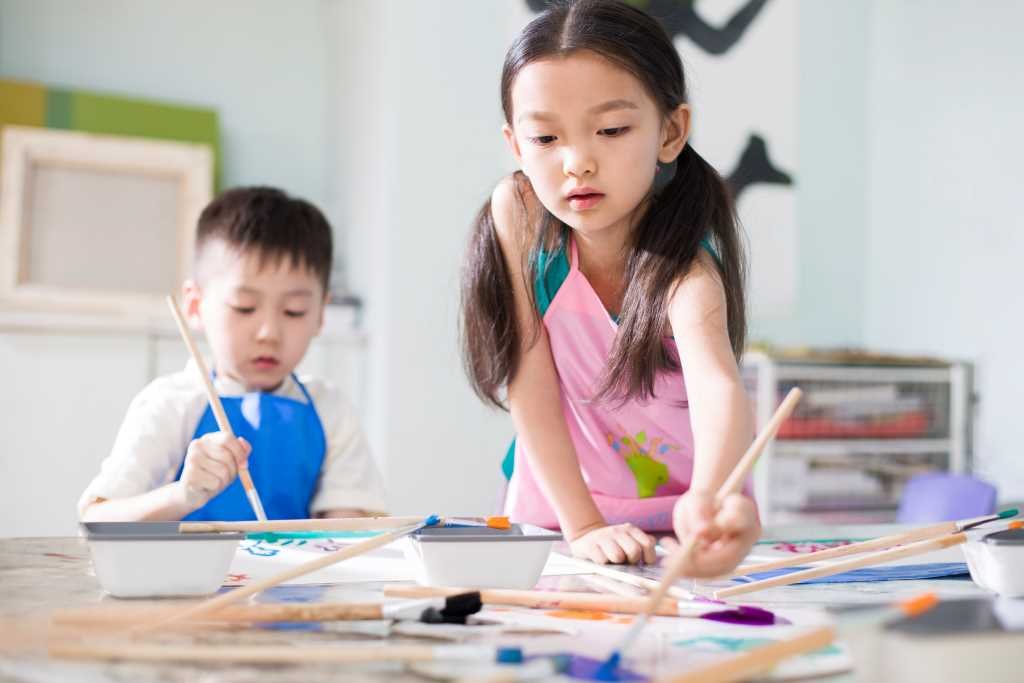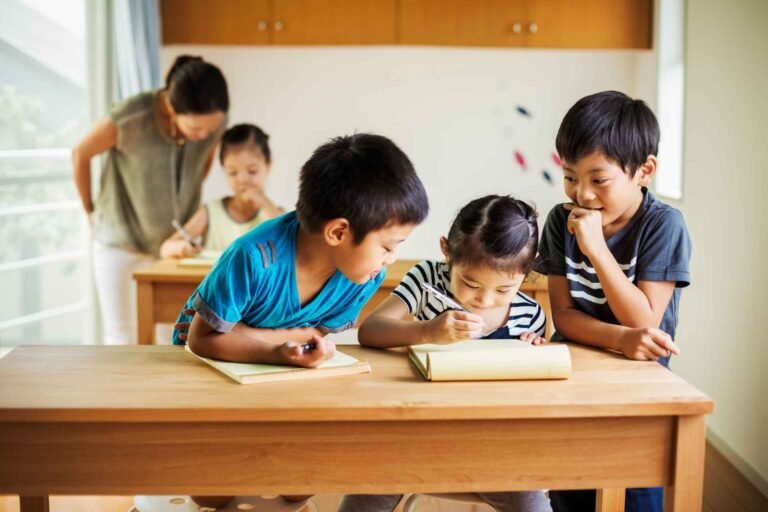Home » The Sycamore Center for Progressive Education Curriculum » Grade 4 Curriculum: American History
Grade 4 Curriculum: American History
Get to explore American culture and history, from pre-colonial times to the 20th century, and its influence throughout the world, especially in the Philippines.
Major Subjects: Bible, History, English, Filipino, Science, Math
Minor Subjects: Music and Art, Physical Education, and Technology and Livelihood Education


CORE SUBJECT
Bible 04
Learning Outcomes:
More specifically, learners are expected to exhibit cognitive, affective, and kinesthetic competencies as manifested in the following outcomes:
- As a result of studying the Bible, one can become acquainted with significant individuals, locations, and situations and become knowledgeable in the Christian faith through diverse biblical accounts shared via different media platforms.
- Establish a personal sense of self and identity in God by exploring the various narrations of His love towards humankind in the Bible.
- Implement the teachings derived from various biblical stories by conducting activities, discussions, and object lessons in daily life.
- Recognize the significance of the biblical narratives discussed in the classroom to establish firm fundamentals of their Christian religion.
Student References / Workbooks
- The Holy Bible
CORE SUBJECT
History and Geography 04
Introduction to American History
Learning Outcomes:
More specifically, learners are expected to exhibit cognitive, affective, and kinesthetic competencies as manifested in the following outcomes:
- Emphasize the relevance of important historical events and personalities from both the past and present through the use of timeline figures, discussion, and news articles.
- Relate historical events and cultures discussed in class to relevant geographical locations, such as Europe, the Middle East, and Asia, by tracing and plotting them.
- Analyze the distinctive ways in which various societies come into being as a result of factors such as geography, inhabitants, religion, culture, values, and beliefs. This will be undertaken through the process of discussion and collaborative effort to grasp the influence that geography holds over human behavior and culture.
- Explore the diverse civilizations and cultures discussed by engaging in the manipulation of various craft materials, thereby gaining a deeper appreciation of the unique architectural structures, tools, jewelry and other artefacts that are characteristic of each.
- Empathize with the different cultures across different time periods and locations to gain appreciation of various historical and cultural heritage through role playing and games.
- As a result of engaging in discussions, role playing, and essay writing, students are able to generate their own ideas about the interrelatedness of different cultures and societies and how this relates to their present way of life.
- As a result of comparing and contrasting different societies based on people, culture, religion, values, and beliefs, students will have a deeper appreciation of the world around them. This appreciation will allow them to be more respectful of cultural diversity.
- Integrate real-life applications into other disciplines to cultivate a sense of responsibility for the environment, society, and the world we live in.
Student References / Workbooks
- Pedro’s Journal: A Voyage with Christopher Columbus, Pam Conrad, 1999
- The Landmark History of the American People: From Plymouth to the West, Boorstin, Daniel & Ruth Boorstin, 2013
- The Landmark History of the American People: From Charleston to the Moon II, Daniel & Ruth Boorstin, 2013
- Smithsonian: Children’s Encyclopedia of American History, David King, 2014
LANGUAGE SUBJECT
English Arts and Literacy 04
Understanding American History by Building Language Arts, Reading, and Writing Skills and Strategies
Learning Outcomes:
More specifically, learners are expected to exhibit cognitive, affective, and kinesthetic competencies as manifested in the following outcomes:
- Develop critical thinking skills while reading narrative and informational texts by applying reading comprehension strategies learned through modeling, direct instruction, practice, games, reading text, and other literacy-centered activities.
- Use reading skills and strategies to form conclusions and recreate new ideas through semantic mapping, brainstorming, discussions, written output, and other creative output.
- Use correct grammar by learning from good language exposure, direct teaching, writing activities, and consistent practice.
- Expressively and accurately read aloud level-appropriate narrative and informational text for fluency and comprehension through oral reading activities in the classroom.
- Use oral and written communication skills to critically and creatively respond to stories (both read-aloud and read independently) through discussions, written compositions, and other creative literary output.
- Demonstrate a sincere desire and admiration for engaging with and comprehending genuine literary material by exhibiting a positive attitude and eagerness throughout all forms of oral and written literacy exercises.
- Use role play, written work, discussions, and other creative output to develop empathy for different characters and be accountable for the various issues presented in narrative and informational texts. Through these activities, describe the successes and struggles of the characters to gain a deeper understanding of the text.
Student References / Workbooks
- Frog and Toad All Year by Arnold Lobel
- Frog and Toad Are Friends by Arnold Lobel
- Frog and Toad Together by Arnold Lobel
- Days with Frog and Toad by Arnold Lobel
- Mouse Tales by Arnold Lobel
- Owl at Home by Arnold Lobel
- Steps to Functional Writing 2 by Virginia E. Antonio
LANGUAGE SUBJECT
Filipino 04
Komonikatibo, Replektibo / Mapanuring Pag-iisip at Pagpapahalagang Pampanitikan 4
Learning Outcomes:
- Ang kakayahan sa matalinong pakikinig at pag-unawa ng iba't ibang teksto ay maipapakita.
- Maipapakita rin ang galing at lebel sa pagsasalita at paglalahad ng personal na ideya, kaisipan, karanasan, at emosyon.
- Makakagawa ng matalinong pagbasa sa sari-saring teksto at mapapalawak ang bokabularyo.
- Mauunlad ang kakayahan sa pagsulat ng iba't ibang klase ng sulatin.
- Maipapamalas ang galing sa matalinong panonood ng iba't ibang media gaya ng mga patalastas at short films.
- Maipapakita ang pagpapahalaga at husay sa paggamit ng wika sa komunikasyon at pagbasa ng iba't ibang panitikan.
- Kayang isaulo ang isang tula o awit at maipapalabas ang isang tema o paksa mula sa narinig na teksto.
- Magagawa ang pagbibigay ng mga instruksyon na higit sa limang hakbang, makakasali sa talakayan tungkol sa isang isyu, at makakapagsulat ng reaksiyon dito.
- Magagawa ang sariling diksiyonaryo ng mga bagong salita mula sa binasa; naisasadula ang mga posibleng pangyayari sa teksto.
- Makakagamit ng iba't ibang nakalimbag at hindi nakalimbag na materyales sa pananaliksik.
- Magagawa ang pagsali sa mga talakayan at diskusyon, pagkukuwento, pagtula, at pagsulat ng sariling tula at kuwento.
Student References / Workbooks
Filipino: Isang Hamon 4
The Filipino Odyssey 4
STEM SUBJECT
Science 04
The Amazing Human Body
Learning Outcomes:
- Recognize the body systems, their parts, and functions through research, reporting, and discussions
- Demonstrate understanding of the parts and functions of the human body through demonstrations and hands on activities
- Recognize and understand the changes in their bodies through discussion and documentation
- Advocate respect and care for the body and health through the creation of a mixed media information or communications campaign
Student References / Workbooks
- Claybourne, A., Moncrieff, S., & Percival, J. (2015). The Usborne Complete Book of the Human Body. Usborne Publishing.
STEM SUBJECT
Mathematics 04
Foundation of Mathematics 4
Learning Outcomes:
More specifically, learners are expected to exhibit cognitive, affective, and kinesthetic competencies as manifested in the following outcomes:
- Understand math through digital and experiential learning, covering numbers, geometry, algebra, patterns, measurement, statistics, and probability. Activities include group discussions, games, interactive experiences, hands-on activities, and manipulatives to encourage deep understanding and mastery.
- Use basic arithmetic operations (addition, subtraction, multiplication, and division) to solve numerical equations and word problems utilizing a variety of learning aids such as models, manipulatives, images, and diagrams, measuring instruments, and electronic devices.
- Analyze whole numbers to millions, fractions decimals, and percents through comparison using the terms same, more, fewer, greater than, less than, equal to, greatest, and least.
- Solve mathematical and number problems involving addition, subtractions, multiplication, division of whole numbers and decimals, figures, patterns, measurement, and elapsed time.
- Evaluate the appropriate operation to use based on problem solving exercises;
- Classify, describe and analyze two-dimensional and three-dimensional shapes and their attributes.
- Show understanding of data by constructing, identifying, analyzing, collecting, organizing, interpreting and creating single bar and double bar graphs.
- Create and predict outcomes in situations of probability.
- Record outcomes in a simple experiment through tallying and tables.
- Create projects or concrete examples that showcase students' grasp and experience of mathematical principles.
- Show understanding and value of math in various social, economic, environmental, and cultural contexts.
- Foster teamwork, cooperation, confidence, honesty, and sportsmanship values through the practical application of math in real-life scenarios.
Student References / Workbooks
- My Math Grade 4 Textbook

